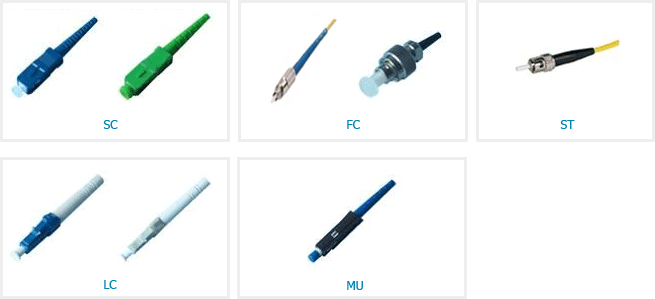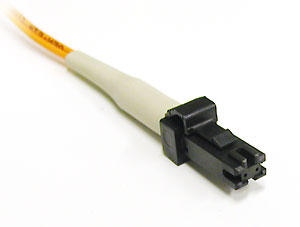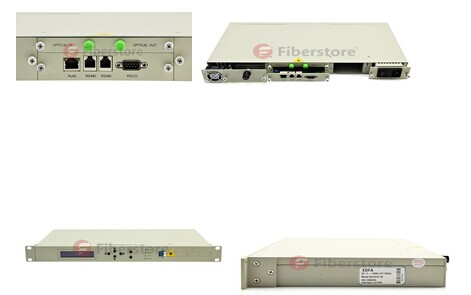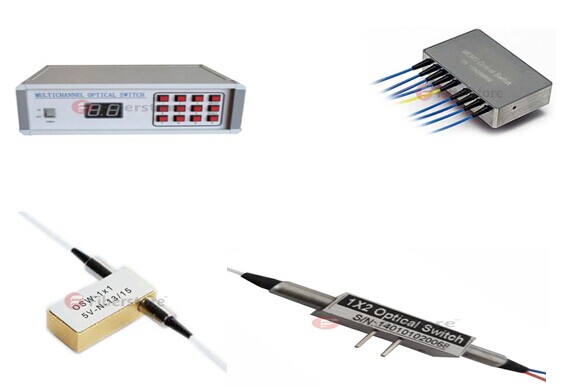Introduction
Fiber optic patch cable, often called fiber optic patch cord or fiber jumper cable, fiber optic patch cords are the simplest fiber optic elements, consisting of short length of optical fiber with a connector on either end. Since they are used to connect various componets and instruments in a fiber optic system, their characteristics in terms of loss and aging determine the overall performance of the system. In principle, when two fiber patch cords are connected, if the fibers are identical, it should result in almost zero loss. In actual pratice the loss may not be very small since the fiber may not be completely concentric with the connector center, there could be dust at the tip of the connector, or there could be misalignments when two patch cords are mated. Patch cords with different types of fibers and different connector types are available. Typical insertion loss of patch cords are about 0.4 dB, with a return loss of better than 50 dB.

There are many types of fiber jumpers, according to the shape of the connector can be divided into: FC, SC, ST, LC, MT-RJ, MU, etc. The connector plug from the type of pin body can be divided into types of pins: PC, UPC, APC, etc; according to the type of optical fiber, it can be divided into single-mode fiber, 50/125 multimode, 62.5 / 125 multimode. According to the the fiber diameter can be divided into 900μm, 2mm, 3mm, ect. In accordance with the shape of the connector division, singlemode fiber connector types can be used with FC, SC, ST, FDDI, SNA, LC, MT-RJ, etc. Multimode fiber can be used with FC, SC, ST , FDDI, SMA, LC, MT-RJ, MU, VF45, ect. Singlemode fiber patch cords are including SC / PC, SC / APC, FC / PC, FC / APC, ST / PC, LC / PC, LC / APC, MU / PC, MU / APC, MT-RJ. Multimode jumpers included : SC / PC, FC / PC, ST / PC, LC / PC, MU / PC, MT- RJ.
Common Types Of Fiber Patch Cords

Below we briefly introduction common fiber patch cords according to the shape of fiber optic connector. There are FC, SC, ST, LC, MT-RJ fiber patch cords.
FC Fiber Optic Patch Cord
The FC has become the connector of choice for singlemode fibers and is mainly used in fiber optic instruments, SM fiber optic components, and in high speed fiber optic communication links. This high precision, ceramic ferrule connector is equipped with an anti rotation key, reducing fiber endface damage and rotational alignment sensitivity of the fiber. The key is also used for repeatable alignment of fibers in the optimal, minimal loss position. Multimode versions of this connector are also available.
The FC fiber optic patch cable is available in both singlemode and multimode versions, and is fully intermateable with NTT-FC products. Both smf and mmf versions FC fiber optic patch cord come with a zirconia ceramic ferrule with pre-polished PC profile and convex spherical end.
ST Fiber Optic Patch Cord
The ST connector is used extensively both in the field and in indoor fiber optic LAN applications. Its high precision, ceramic ferrule allows its use with both multimode and single9mode fibers. The bayonet style, keyed coupling mechanism featuring push and turn locking of the connector, prevents over tightening and damaging of the fiber end. The insertion loss of the ST connector is less than 0.5 dB, with typical values of 0.3 dB being routinely achieved.
ST fiber cable connector has a bayonet-style housing and a long spring-loaded ferrule hold the fiber. They are available in both multimode or singlemode versions. Horizontally mounted simplex and duplex adapters are available with metal or plastic housing, with a choice of phosphor bronze or zirconia split sleeve. The ST fiber patch cord is one of the older generations of connector, but is still widely used for multimode networks, including LANs for buildings and campuses.
LC Fiber Optic Patch Cord
The LC connector developed by Lucent Technologies is a more evolutionary approach to achieving the goals of a SFF connector. The LC connector utilizes the traditional components of a SC duplex connector having independent ceramic ferrules and housings with the overall size scaled down by one half. The LC family of connectors indcludes a stand-alone simplex design; a “behind the wall” (BTW) connector; and the duplex connector available in both single-mode and multimode tolerances, all designed using the RJ-style latch. The LC connectors ar available in both simplex and duplex configurations. They are available in industry standard beige and blue colors for multimode and single-mode applications, respectively. The connectors will accommodate 900 um buffered fiber and 1.60 mm (0.063-in) and 2.40-mm (0.094-in) jacketed cable.
LC patch cord is with LC fiber optic connector,which is a push and latch structure. LC connector has a small form-factor Fiber optic connector, is widely used for densely installation.The LC fiber optic connector has good performance and is highly favored for singlemode.The LC fiber patch cable connector is used on small diameter mini-cordage (1.6mm/2.0mm) as well as 3.0mm cable. LC fiber cable connectors are available in cable assembled or one piece connectors. The LC fiber optic assemblies family is Telcordia, ANSI/EIA/TIA and IEC compliant.
SC Fiber Optic Patch Cord
The SC connector is becoming increasingly popular in single9mode fiber optic telecom and analog CATV, field deployed links. The high precision, ceramic ferrule construction is optimal for aligning single9mode optical fibers. The connectors’ outer square profile combined with its push pull coupling mechanism, allow for greater connector packaging density in instruments and patch panels. The keyed outer body prevents rotational sensitivity and fiber endface damage. Multimode versions of this connector are also available. The typical insertion loss of the SC connector is around 0.3 dB.
SC fiber patch cord is one of the earliest stype and one of the most commonly used fiber optic cable, it is convenient to use and cost saving – It is the most cheapest type fiber optic cable. SC fiber patch is widely uesed in fiber optic networks. SC fiber patch cable is with zirconia sleeve and plastic housing.
MT-RJ Fiber Optic Patch Cord

MT-RJ uses a form factor and latch similar to the 8P8C (RJ45) connectors. Two separate fibers are included in one unified connector. It is easier to terminate and install than ST or SC connectors. The smaller size allows twice the port density on a face plate than ST or SC connectors do. The MT-RJ connector was designed by AMP, but was later standardized as FOCIS 12 (Fiber Optic Connector Intermateability Standards) in EIA/TIA-604-12. There are two variations: pinned and no-pin. The pinned variety, which has two small stainless steel guide pins on the face of the connector, is used in patch panels to mate with the no-pin connectors on MT-RJ patch cords. The MT-RJ fiber connectors utilize precision molded MT ferrules pioneered by NTT, together with precision metal guide pins and precise housing dimensions to ensure fiber alignment when mating. The MT-RJ fiber patch cable is reliable and simple to terminate.
MU Fiber Optic Patch Cord
The MU connectors have a simple push-pull design and compact miniature body. The MU connector ferrules are half the size of the standard FC, SC connectors (1.25 mm ferrule O.D.) and are excellent for high density installations.JDS Uniphase MU connectors are available with 900 μm buffered fiber. These connectors achieve excellent insertion loss (0.1 dB typical 1 ) and provide high return loss (55 dB typical 1 ).
MU fiber patch cable has a push-pull style design. MU fiber patch cord is completely intermateable with NTT-MU products, The MU connector looks a miniature SC connector with a 1.25 mm ferrule. It is a popular patch cable type in Japan.










